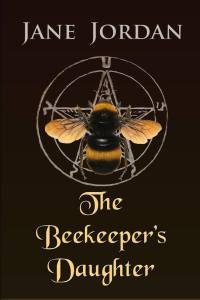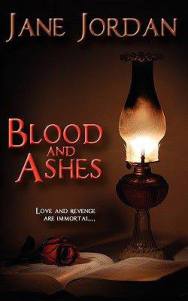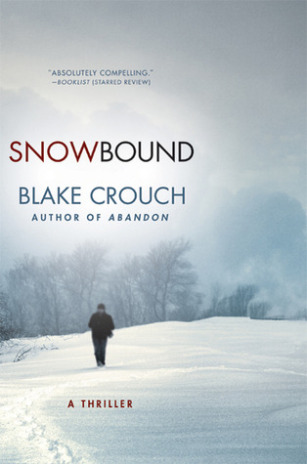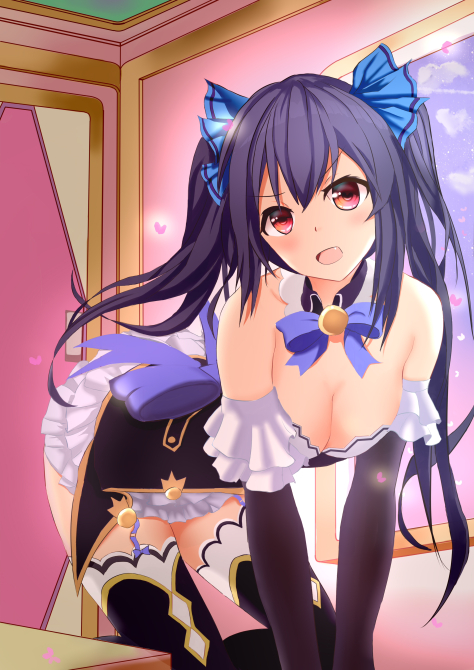 Jane was born in in England, and grew up exploring the history and culture of London and surrounding counties. After some time spent in Germany in the 1990’s she immigrated to Detroit, USA, eventually settling in South West Florida. She returned to England after a fifteen-year absence, to spend six years in the South West of England living on Exmoor. Here, inspired by the atmosphere, beautiful scenery and the ancient history of the place, she wrote her first novel Ravens Deep. The next two books Blood & Ashes and A Memoir of Carl completed her gothic vampire trilogy.
Jane was born in in England, and grew up exploring the history and culture of London and surrounding counties. After some time spent in Germany in the 1990’s she immigrated to Detroit, USA, eventually settling in South West Florida. She returned to England after a fifteen-year absence, to spend six years in the South West of England living on Exmoor. Here, inspired by the atmosphere, beautiful scenery and the ancient history of the place, she wrote her first novel Ravens Deep. The next two books Blood & Ashes and A Memoir of Carl completed her gothic vampire trilogy.
Jane is a trained horticulturist, and spent time working and volunteering for Britain’s National Trust at Exmoor’s 1000-year-old Dunster Castle. Gaining more insight into the history and mysteries surrounding these ancient places, and having always been intrigued by the supernatural, inspiration came for her fourth novel, THE BEEKEEPER’S DAUGHTER. Combining the age-old struggle between good and evil with the passion and romance of the characters she creates.
Jane returned to Florida in 2013, and lives in Sarasota with her family.
Tell us about your new release.
 THE BEEKEEPER’S DAUGHTER is a historical thriller that primarily takes place in the late Victorian period. The story is set on Exmoor, the South West Coast of England. It tells the story of Annabel who is a talented bee charmer, she also inherited far more complex powers, for her mother was a witch.
THE BEEKEEPER’S DAUGHTER is a historical thriller that primarily takes place in the late Victorian period. The story is set on Exmoor, the South West Coast of England. It tells the story of Annabel who is a talented bee charmer, she also inherited far more complex powers, for her mother was a witch.
Annabel grew up knowing that she was different from other people, and that she could manipulate more than just the bees. Living in harmony with nature, her abilities seemed like a natural way of life, but when faced with adversity, she summons these inherent powers to protect the ones she loves. Not only does she discover the extent of her own gift, she soon realizes that another, and possibly a far more powerful witch has a hold over her destiny.
Jevan is her childhood friend and sweetheart, and her heart is broken when he is forced to leave her and Exmoor. During his absence, she forms a friendship with Alex, the son of a wealthy landowner. Alex becomes besotted with her, and surprisingly Annabel feels a rare connection with him. Soon Alex’s attentions take a sinister turn. Although puzzled by his sudden change in character, she discovers that his father, Cerberus is the driving force behind many of his actions.
Unexpectedly, Jevan returns, and Annabel’s world turns upside down, but when Jevan is falsely arrested and condemned to death, she knows the only way to save him is to pledge her hand in marriage to Alex.
For Annabel, this marriage is a recipe for disaster, she begins to despise Alex, while she and Jevan are unable to stay away from each other. Thus ensues a devastating love triangle. As jealously intensifies, each man wants the other one dead. Annabel not only has to contend with this destructive relationship between Alex and Jevan, but she is in danger from the wrath of a spirit that refuses to rest in the foreboding Gothelstone Mansion. At the same time, her father-in-law seems intent on making her believe a diabolical truth.
In this dark and intriguing gothic tale, Annabel must unravel the Saltonstall legacy, save the life of the man she loves and destroy the source of evil that has plagued generations of the family before her.
What led you to write this book?
I wanted to write a story set in another time period. On the face of it the Victorian era seems like a simpler way of life, compared with today. But back then, people had far more pressing concerns, especially for the lower classes. Their lives were about survival and not starving to death.
The upper classes had their own social hierarchy and powerful positions that gave them authority over other classes. Often their families had accumulated wealth over the generations so they did not need to labor, or they owed their money to commerce and industry. They exploited the lower working classes.
The middle class were one component of the working class and employed in a wide range of occupations of various status and income. At the bottom were the impoverished under classes, the poorest of all, they often ended up in the work house or worse. These given facts were key to this story as when classes collide, especially in a romantic situation, it puts a whole different spin on matters.
The opening scene when Annabel first meets Alex very much portrays this class exploitation. She is beautiful, but socially beneath him, he is important and accustomed to getting his own way. He is instantly attracted to her, and assumes his social status will intimidate her enough that by threatening her, she will submit to his attention. In his arrogance, he believes that as a wealthy landowner he has a right to demand the attention of this common peasant girl.
I liked the idea of throwing these characters together in a relationship, knowing that at this time in history such a union would have been scandalous, and very much unacceptable in polite society. That does not mean it didn’t happen, indeed, many wealthy men had mistresses from the underclasses, and despite what society demanded, people have always behaved the same way where sex and love was concerned
I also wanted to write about witchcraft. History tells us a shocking number of innocent women and sometimes men were falsely accused of being a witch. They were often tortured before their execution. In order for this story to be realistic I had to start the story at an earlier time frame. The witch burning is a chilling reminder of what so many of our ancestors endured.
Ultimately this is a story about good and evil. I wanted to show that even a good character can be pushed to the limits when they or the ones they love are threatened, reflecting the light and dark in us all. All these ideas intrigued me and the plot for THE BEEKEEPER’S DAUGHTER was borne.
Did you have an interesting experience in the research of this book?
Perhaps one way or another I have been subconsciously researching this book all my life. I grew up in Essex, England, famous for being one of the most haunted counties. Close to where I lived was a Saxon church reputedly haunted by seven witches. As a child, I played in the graveyard and around the stocks (pillories) the story of the witches fascinated me, so did the reports of people being paid one hundred pounds to stay in the church tower of a night, supposedly no one could, every person fled in terror.
Halloween in England is a decidedly more pagan affair than in America, and the stories of covens of witches were reputedly gather and perform rituals at the dead of night also sparked my imagination.
As an adult I have met witches, and listened to modern day stories about the craft. They are a source of inspiration rather that anything dark or dangerous, most white witches follow the path of the wise which is closely associated with the pagan beliefs of the natural world.
One of the most fascinating places of research was at the witchcraft museum in Cornwall England, it has a vast collection of implements used to test a witch, even the ducking chair/stool, as well as artifacts such as witch bottles, dolls made from hair and bone and chilling documents.
My own Scottish grandmother had what is referred to as the second site, or clairvoyance, she read tea leaves and could supposedly put the evil eye on you. So perhaps witchcraft is in my blood after all.
Do you people watch for character inspiration?
All the time, but not just people that I meet or see, sometime a picture will inspire me.
 After reading an article about ballerinas and the harsh routine a professional dancer has to endure, and the interview of one particular ballerina, she became Sarah, a character in my third novel, A MEMOIR OF CARL. By having a picture, I could write about her in detail, and invent her personality. I also draw on experiences from people I have known. I knew a professional dancer many years ago, she gave me an insight into the darker side of that profession, when gaining a few ounces in weight could be devastating to their careers.
After reading an article about ballerinas and the harsh routine a professional dancer has to endure, and the interview of one particular ballerina, she became Sarah, a character in my third novel, A MEMOIR OF CARL. By having a picture, I could write about her in detail, and invent her personality. I also draw on experiences from people I have known. I knew a professional dancer many years ago, she gave me an insight into the darker side of that profession, when gaining a few ounces in weight could be devastating to their careers.
Sometime the character is a version of myself, but darker, more dangerous or extreme. When you write, there are no limits or boundaries to what your imagination can conjure up.
Many other character have been loosely based on people I have known, or sometimes a character is just an amalgamation of several people, their worst traits or their best. Most people have something interesting about them even if its mundane and boring, a whole character can be borne out of someone that is seemingly dull. That’s what is great about being a writer, you take the ordinary and make it extraordinary.
In THE BEEKEEPER’S DAUGHTER I based Annabel’s look, red hair and green eyes, on what is typical for a Celtic Irish hereditary. Red hair is commonly found in the indigenous population of the United Kingdom and Ireland. While Jevan’s appearance was based on an archetypical dark and brooding wild gypsy, in keeping with the wild moors that he grew up on.
 What do you hope readers take away from your work?
What do you hope readers take away from your work?
Even though THE BEEKEEPER’S DAUGHTER is a work of fiction, it is based on many facts. I used wording from a real witch trial, and I completed a lot of research in the Victorian period for of what it would have been like for the cottages and the wealthier classes. I hope my readers feel the authentically and invest their emotions in my characters. Ultimately, I want readers to read all of my books and my future work.
Do you read the same genre you write?
I do have a passion for dark gothic tales, although, I have read a wide range of genres. It often depends on what mood I am in, but generally I like books that make me think about them long after I have finished reading. I like stories that are not typical or have a clever twist. But I do not like epic length novels, as I often feel that overly long books have too much padding and not enough story.
Have you ever written a scene that ‘creeped’ you out?
Yes, it was in my second book, when my darkest character Kitan, found himself imprisoned with a much older, much more disturbed vampire named Nicholas, whose soul was so steed in venom he had not an ounce of humanity left.
Kitan realizes that the chains that bound Nicholas to the wall are broken, and Nicholas says the following sentence to Kitan. “In your eyes, I can see you vision of hope, it is pitiful, and you do not even comprehend what you have done. You may have walked in here full of expectation, but if you leave it will be full of despair.”
Writing this whole scene was very chilling, but it worked perfectly for the story.
 Do you have a favorite writing place or writing rituals?
Do you have a favorite writing place or writing rituals?
I write mostly in my office where it is quiet, but occasionally I will take a notepad and pen and get away from the computer. Sometimes it can be a way to make a scene come together. My writing rituals have changed over the years. I used to start everything in a notebook, now I just type onto a computer and if I am struggling with a chapter I go back to the notebook and take myself into a different room. A change of scene can often inspire a completely new thought pattern.
Do you have a reoccurring theme to your books?
Yes. There is always an underlying love story, and an element of romance that is dark. I like to weave the gothic feel in the mood or atmosphere. I like to use an aspect of horror and the supernatural, but rather than it being horrific I prefer to be subtle.
I always try to draw inspiration from real life and incorporate folklore or legend into my work, and I like to use real settings or even houses, as once you begin to research actual places you can uncover all sorts of secrets.
What are you reading now?
I am reading a collection of short stories by Daphne du Maurier called Don’t Look Now. I greatly admire her work. She was English novelist that took inspiration from the places she knew, and her work has been described as ‘moody and resonant’ with overtones of the paranormal, she also wrote about wild places and dark secrets, something I do, which gives me a certain kinship with her as a writer.
What social media do you participate in?
I use Facebook a lot, mainly to keep in touch with friends and family that are in different countries. I belong to many author/writer Facebook groups and I try to participate in some, but I don’t often have that much time to read too many other posts. I do use twitter, but to a lesser extent.
I recently started my own blog and I try to blog every couple of weeks or post links to interviews I have done, but I don’t have the time to blog every day.
What is the one question you wish an interviewer would ask you?
Question: There is always a supernatural element in your novels why is that?
Answer: Fascination is the simple answer. But there is always a more complex reason. I have experienced many supernatural things in my life, I grew up listening to stories of the green lady at Stirling Castle and having my palm and tea leaves read, perhaps being of Scottish heritage, the superstition gene emerged in me.
In the past, certain houses or places have given me distinct feelings of something not quite right, and more so when staying in various old houses I have known that something not tangible shared the space with me.
I once lived in a five-hundred-year-old cottage with its resident ghost. A black cat would run across the fireplace and into the wall, which once was a stairway, I was not the only person to witness this strange occurrence, then, when we remodeled part of the cottage we unearthed a cat skeleton sealed in the wall, along with a bear claw and several witch pins.
The supernatural is part of everyday life, and so writing in the thriller or horror genre its seems to be a perfect companion,
How has your environment & upbringing colored your writing?
I grew up in a small town in Essex, back then my best friend and I played in the countryside that surrounded our houses, fields bordered with hedgerows and woodlands, we made dens in the trees and it felt as though we roamed for miles. With other friends, we played in graveyards and made up stories about the stone tombs that were broken, to us the most plausible explanation was the undead had broken out.
As an adult I have travelled extensively. I have lived in Europe and America, exploring old cities and castles, I also went back to England to live on the edge of Exmoor for six years, working in a 1000-year-old castle, all these places have shaped my outlook on the world in general.
My Scottish heritage imprinted tales of castles and ghosts and of tenements and poverty. My English heritage imprinted tales of living through the blitz in London during the second world war, while my English grandmother took in lodgers in her Victorian London house, and my mother told me stories of these colorful characters. All these things shape you growing up.
Why do you name your Chapters?
Adding titles to chapters adds an element of interest to a novel. The individual titles give a hint of what the reader can expect. Many authors don’t bother with them, but I find myself drawn to books that do. It feels like the author has thought a little bit harder about each chapter, and as a writer I believe it completes the entire chapter.
A chapter title is a small phrase that has power. It can entice the reader to continue reading, after all, most people stop reading at the end of a chapter. They may give a cursory glance to a number for the next chapter, but a title, especially an intriguing one, will spark their interest and possibly make then decide that they will read just one more chapter after all.
It’s also useful when editing to help you know what that chapter is supposed to be about.
What’s next for you?
I am currently finishing up my fifth book, WHISHT HALL. This new book spans over twenty years and tells the story of the Louyer siblings, whose heritage began in the dangerous swamplands of Louisiana, and of Amy, their English half cousin.
Amy arrives at the remote WHISHT HALL shortly after her father’s death, as the ward of her uncle Henri. She soon discovers that her cousins are not what she expected, and between them is a deeply complicated relationship. Amy listens to the gardener’s strange tales and realizes that the moor holds more than just one chilling secret. She must escape the clutches of her deranged cousin, but the question is, just which one of them really wants her dead.
This novel was a complex undertaking, and my readers will embark on a literary journey that moves between the treacherous moorland of Dartmoor in South West England to the French Quarter in the city of New Orleans. This darkly romantic thriller is steeped in English folklore and mixed with the intriguing religion of voodoo of America’s deep south.
Share this:




